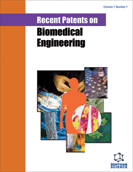Abstract
Accurate anatomical reduction is a crucial step for operative treatment of diaphyseal fractures of long bone. Failure to realign the fracture site would result in delayed union, malunion, or non-union. Closed reduction is a reduction of a fractured bone by manipulation without incision into the skin. Conventionally, it is conducted under fluoroscopic guidance. Given that the fracture deformity is three-dimensional (3D) in nature, one could imagine how difficult it can be to reduce a 3D deformity based on the static and limited field-of-view two-dimensional fluoroscopic images. In the past few decades, various attempts have been made to improve the closed reduction process. These vary from speciallydesigned fracture reduction apparatus to robotic assisted reduction. The aim of this paper is to review the advancements and patents in methods and apparatus developed to assist with closed reduction of diaphyseal fractures of long bones. Pros and cons of these approaches will be highlighted.
Keywords: Long bone fracture, fracture reduction, closed reduction, fracture reduction device, external fixator, inverse kinematics, image-guided reduction, robotic assisted reduction
 4
4

